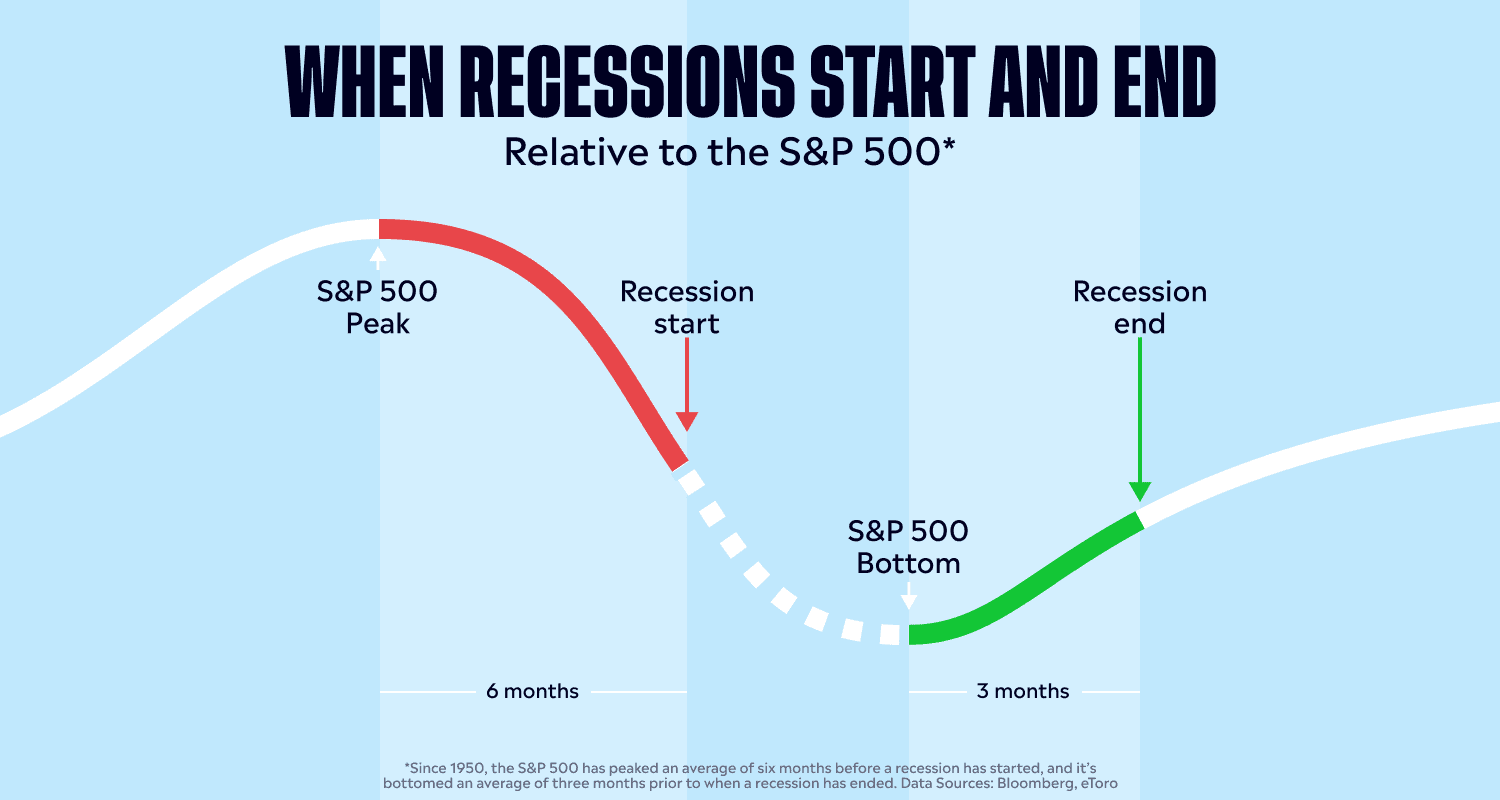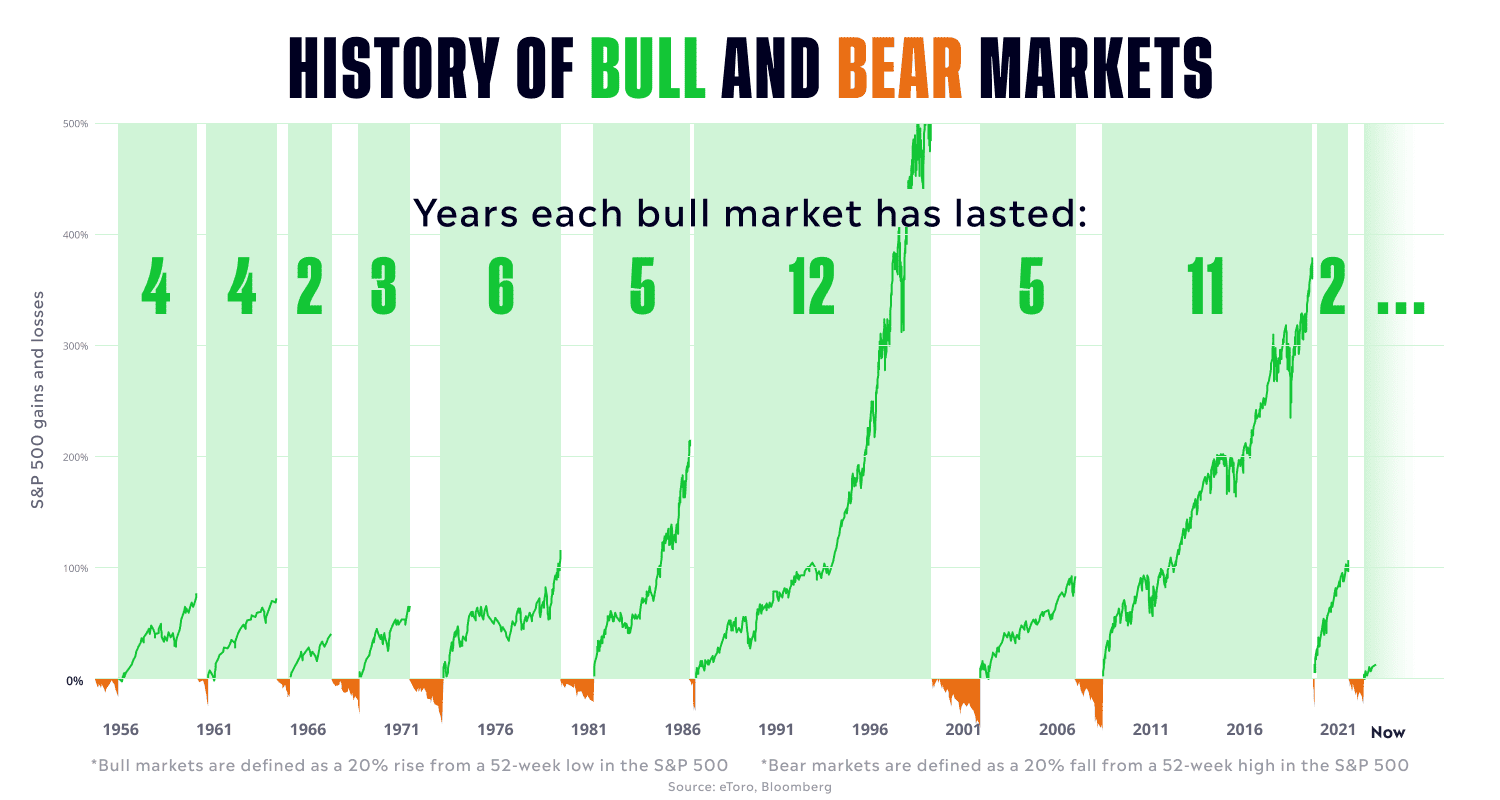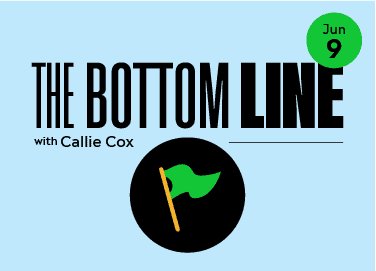Wall Street has finally put a label on this eight-month-old stock rally: a bull market.
It’s true. The S&P 500 has risen 20% from its October trough, which fits the classic definition of a bull market — when the price of a security or index rises 20% from a 52-week low.
Is this really a bull market, though?
Look throughout history, and you’ll see that bull markets happen when investors move past a crisis, leading to a rally that typically lasts a year or longer and pushes prices back to new highs. Today’s market doesn’t exactly inspire that kind of confidence.
But if this is a true bull — meaning that the rally is here to stay — it could signify an important change in the market’s psychology is underway.
And I’m here to answer all your burning questions about it.
OK, so we’re in a bull market. Why doesn’t it feel like we’re in a bull market?
Because the Fed’s job isn’t done yet. As long as inflation keeps rising at a pace faster than 2% annually, the Fed has an excuse to keep hammering the economy through high interest rates. A recession isn’t out of the question until we get inflation under control.
Plus, it’s hard to ignore the fact that not all stocks are rising at the same pace. Small-cap stocks, which typically lead early on in bull markets, have lagged behind larger stocks this year. Cyclical sectors — or industries that tend to do better when the economy is growing — have fallen behind as well.
But here’s the tricky part. Bull markets rarely feel like bull markets at first. Since 1950, the S&P has bottomed an average of three months before a recession has ended. And if you wait until things feel better, you could miss the beginning of the bull.

At this point, expectations may matter more than reality. We may be past the worst of people’s fears — even if we haven’t hit a recession yet. That matters.
How will I know for sure if this is a bull market?
This could depend on what we see from the job market and earnings. If consumers and businesses are doing well, then the economy could give investors a good reason to stay optimistic (and keep buying stocks).
Good news: The data could be getting better. Analysts now think S&P 500 earnings could start increasing on a quarterly basis — a trend that’s marked the end of bears in the past. Hiring and employment have stayed consistently strong, too.
Of course, better isn’t the same as good, and there are still signs of growth slowing. But we may be in a situation where investors are guarded against the worst-case scenario, while slowly warming up to the best-case scenario.
What are the chances that Wall Street is wrong, and we’re still in a bear market?
Technically, that would require the S&P 500 to fall below its lowest close in October — or 3,577.
In the end, time may be the only window into if this rally sticks. For now, you can take comfort in the fact that momentum is on your side. History shows that it’s unusual to see stocks consistently climb for eight months, then suddenly drop to new lows. That’s only happened once since 1950 — in the dot-com bubble.
How long will this bull market last?
If this is a bull, then history suggests the rally could last a while.
Since 1950, bull markets have lasted for 5.5 years on average — four times as long as bear markets over the same stretch. And over these bull markets, the S&P 500 has gained an average of 183%.

Now, each bull can look drastically different. The most recent bull market, which ran from March 2020 to January 2021, ended just shy of the two-year mark. Before that, we went through an 11-year bull market as we clawed our way out of the global financial crisis.
Will this be another 11-year stretch of strong returns like we saw in the 2010s? Probably not, especially if the Fed allows a higher rate of inflation. The starting point could also matter, given we haven’t seen a dramatic drop in earnings or price-earnings ratios from last year’s selloff.
Bulls are rarely a straight line up, either. Most bull markets in recent decades have included at least one selloff of 10% or more, plus numerous headlines that insinuate the bull market is about to end.
Don’t get too comfortable. Selloffs happen, even in strong bulls.
How long will it take me to get my money back?
If you invested money into a hypothetical, no-fee S&P 500 fund on January 3, 2022 — the prevailing record high for the S&P 500 — you’ve gained about half of that investment back already.Nobody knows when you’ll make your entire sum back, though. Since 1950, It’s taken the S&P 500 an average of two years to gain back all its losses from bear markets. And in an environment of still-high inflation and bad breadth, higher prices may prove elusive.
Bull markets don’t necessarily mean your losses are gone. It often takes a while for people to make those up.
How do I invest in a bull market?
That’s a question only you can answer.
Evaluate your situation. Your portfolio decisions depend on how long you’re investing and how much you can stomach the ups and downs, not where you think prices are heading next. Why are you investing, and when do you need your money?
Check your ego. Bull markets can be fierce, even if you don’t believe they’re happening for the right reasons. One of the most common excuses people use for putting off investing decisions is because they’re convinced prices will fall. That doesn’t happen as often in bull markets, no matter how much you try to rationalize it.
Remember the context. If this is a bull market, it’s looking a little more unique than ones we’ve seen in the past. Rates could stay high until inflation comes down further, and some companies could struggle, even if the stock market keeps moving higher. Think about which names could weather slowing growth and high operating costs.
*Data sourced through Bloomberg. Can be made available upon request.



